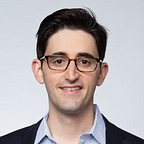Learning as Art
As a kid, I spent countless hours drawing and painting. I dreamt of being a furniture designer. While enterprise software is far from furniture design, one of the things I love most about this industry is that it approaches art. Anyone with the right tools can design a screen. But a well-constructed user interaction can be surprising and delightful — and the very best are delivered by artists who love their craft, appreciate their audience, and carefully consider how to make a statement.
I find teaching to be similar. I am lucky to teach alongside one of Stanford’s most popular business school educators; a man who elevates his instruction to an art form. By mixing theory, humor, and cadence, he holds the attention of a class and conveys critical knowledge. All education should be this way: an artistic endeavor designed to inspire, engage, and challenge its audience. Yet since taking over as Chief Learning Officer at SAP, I have realized that this is not how most professional organizations approach workforce development. We see adult learning simply as functional, not creative. It’s mandated, not desired. It’s a clinical prescription, not an art form.
In that failure, we miss so much potential.
Missing the landscape.
When we treat learning as a functional requirement, we stop asking ourselves where learning happens. That keeps us from seeing the big picture. I can’t tell you how often my conversations with learners reveal that skilling happens outside of what my team might expect. Instead of the tools we pay millions for, most of our learners are doubling and tripling down on YouTube content or Google Search hacks.
But when you treat learning as art, you’re forced to pay attention to the big picture. Consider TikTok. You can think of it as the world’s premiere home for hamster dance videos or one of the world’s largest microlearning platforms (either is true). TikTok content creators know exactly how to captivate viewers with videos that are accessible, digestible, and incredibly addictive: in just a few minutes you can learn how to make a recipe in 3 steps, hear a 60-second take of a top news story, and then get financial advice.
For an example, look no further than my favorite videos from Alex Rodriguez on TikTok. As an anchor for FOX Sports, he knows what great content looks like. He’s proven for decades he can hold the spotlight, on and off the field. But with all his star appeal, he’s probably most relevant to a new generation because of his recent TikToks on real estate investment. By seeing the big picture, a retired baseball player can generate a cult following of learners (1.5M views and counting!).
Missing the pull.
For years, our learning audience was guaranteed — often they were mandated to sit through courses. We didn’t need to consider how to attract and inspire learners. But in a world of flexible labor markets and constant draws on our attention, that must change. Today, experience matters. Unfortunately, the experience of an artless education is one that few want to embrace.
At SAP we see this in the numbers. Every year, our employees’ adoption of openSAP — our free, public facing, learning system — grows at a phenomenal pace (more than 18% this past year to drive more than 68K learning hours). openSAP is home to some of our most compelling, consumer-grade content. But it’s not something that’s required for our employees. Despite this lack of mandate, its growth dwarfs that of the activity in our traditional learning systems. This suggests that our employees are increasingly attracted to innovative expert-led content, available in a wide range formats including micro-learnings, podcasts, and videos, all enhanced with gamification and interactive discussion forums.
With an orientation around the audience, a focus on craft, and an embrace of new mediums, the openSAP team takes their art form to a level that creates pull. It feels like a novelty for corporate learning — but it shouldn’t be.
Missing the innovation.
Finally, artists are constantly exploring. With their audience in focus, great artists are testing everything to drive their messages home. In corporate learning it should be no different. Still, as users shift to mobile, video, and community-based environments, I hear over and over that these mediums just aren’t suited for traditional software training.
That couldn’t be further from the truth. It’s our legacy that’s not optimized for new environments, not our subject matter.
If Quantic can deliver an impactful MBA via a mobile application, certainly we can evolve how we inspire leadership for a digital world. If Duolingo can build proficiency in 19 languages, certainly we can deliver ethics training during takeoff and taxi. And if Kahoot can reach 1.6 billion people playing learning games in the last 12 months alone, certainly we can bring elements of gamification to software enablement.
The unique strengths of every medium appeal to different emotions, audiences, and contexts. Just as art aficionados may have aesthetic preferences, readers’ bookshelves are filled with different genres, and music listeners tune into different playlists — every learner wants to learn differently. The more we can build learning in the right medium, for the right audience, delivered at the right time, the more we’ll see our success in outcomes. The more we think like artists — dedicated to our craft, pushing audiences to new worlds — the better our content will be.
Great artists exist in every medium. My challenge to every learning professional is to embrace that idea. Practice with new tools. Instead of focusing on their limitations, embrace their strengths. You’ll be glad you did.
